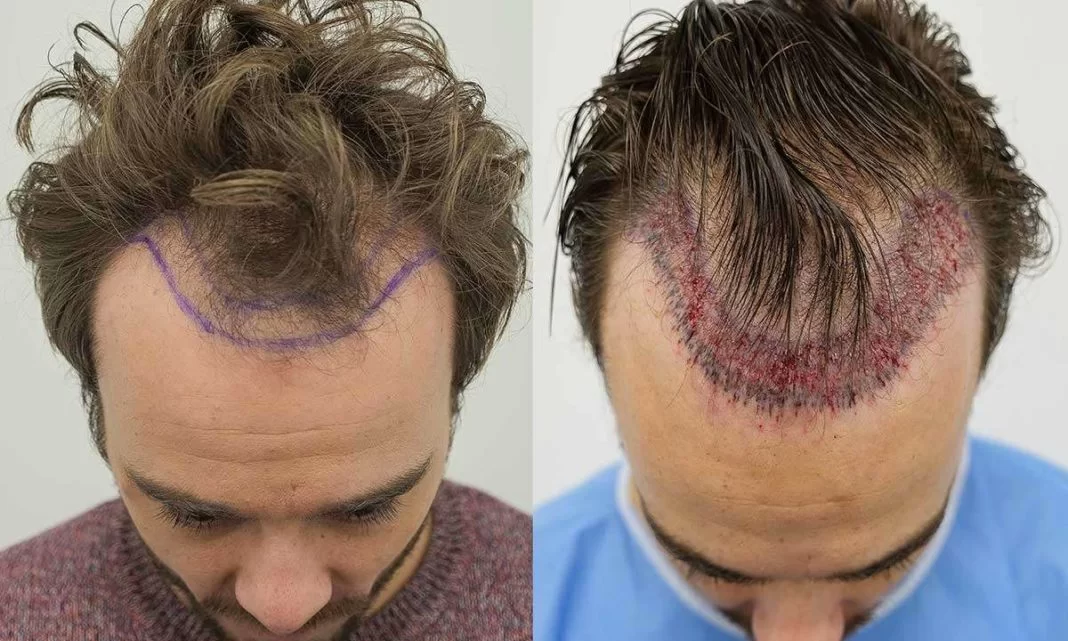
Hair transplants seem permanent at first glance. You leave the clinic feeling hopeful.
But months or even years later, something shifts. Some follicles stop cooperating.
The hairline that once looked full now seems softer, slightly uneven.
It doesn’t always mean failure. But permanence feels like a big word.
For many, the dream of never losing hair again quietly fades.
And what’s left is a slower, more silent kind of shedding.
Not Every Follicle Stays Where It’s Placed
Surgeons talk about donor dominance. The idea is that transplanted follicles stay strong.
But the scalp has its own rules. And some follicles don’t adapt.
Placement technique matters, but biology plays its game.
Sometimes, the graft just doesn’t blend in with its new neighbors.
Even with perfect care, rejection is possible. Not full rejection, but slow resistance.
It’s frustrating because the mirror doesn’t lie. And neither does the comb.
You May Still Need Medications After the Procedure
Many clinics suggest using finasteride or minoxidil after surgery.
It’s not just for prevention. It’s often a requirement to maintain the result.
That sounds odd, considering you just paid for a permanent fix.
But the non-transplanted hair continues to thin. It doesn’t freeze in time.
You start realizing the transplant only covers part of the story.
And the rest? Still needs daily management.
Your Existing Hair Keeps Aging Anyway
Hair transplant doesn’t reset your scalp’s biology.
The hair around the transplanted zone continues its natural cycle.
It’s rare to find someone whose native hairline stays untouched forever.
The transplant might look patchy as time moves forward.
That patchiness isn’t always from poor surgery. It’s just nature.
And nature rarely promises permanence.
Sometimes a Second or Third Session Is Required
You’re told one session may be enough. For many, it isn’t.
Density takes more grafts than you expect.
What looks thick in photos can still look thin in real life.
Under harsh light or wet hair, gaps show up.
The second surgery becomes less of a choice, more of a step.
Transplants can be a process, not a single solution.
The Word Permanent Is Often a Marketing Decision
Clinics use “permanent” to suggest confidence, not biology.
Technically, transplanted hairs are resistant to DHT.
But resistance doesn’t mean invincibility.
Over decades, even strong hairs may thin.
The language used in advertising simplifies something complex.
And what patients hear often differs from what they experience.
Maintenance Still Becomes a Part of Life
People imagine waking up, styling hair like before, and forgetting the baldness ever happened.
But the mirror reminds them. A little touch-up. A careful brush.
Some hairs still shed daily. Some grow uneven.
You learn to maintain, not ignore.
It becomes part of your self-care routine.
Not quite like before. But not bad either.
Expectations Can Make or Break Satisfaction
A good transplant isn’t always about hair density.
It’s about how you felt when you saw your reflection.
Some people are thrilled with a modest result.
Others feel disappointed with a fuller one.
Expectations whisper long after the surgery ends.
And what you wanted may shift with time.
The Procedure Doesn’t Stop the Clock Entirely
You’ll look younger, sure. But not frozen in time.
Hair texture changes. Color fades. Volume softens.
Age catches up with all hair — transplanted or not.
Ten years later, the same hair may feel different.
It’s not about failing. It’s about evolving.
Hair transplants don’t press pause. They press reset.
Not Everyone Gets the Same Results
Photos on clinic walls show ideal outcomes.
Your result might be good, but different.
It depends on donor quality, health, stress, aftercare.
Two people can get the same surgeon, same technique — and end up with different journeys.
That part isn’t said out loud, but it’s very real.
Comparing can create quiet doubts in the mirror.
Some Areas Are Just Harder to Cover
Temples and crowns are tricky. Always have been.
Hairs don’t always survive there as well as on the frontal line.
They need more sessions, more grafts, more patience.
Coverage doesn’t always mean fullness.
Thin coverage can still show scalp under certain lights.
And no one tells you that during the consultation.
It Might Be Permanent Enough for You
That’s what it comes down to. Not textbook permanence.
But lasting enough to bring confidence back.
If you’re okay with occasional tweaks, it’s worth it.
If you expect lifelong perfection, it might disappoint.
Some see it as a fix. Others see it as a step.
Either way, it’s not magic — just medicine with limits.
